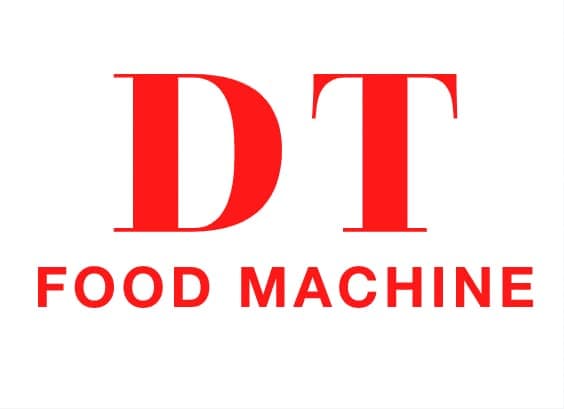Instant noodles are a global convenience food enjoyed in almost every country. The industry is worth billions of dollars annually, with steady demand from both developing and developed markets. For food entrepreneurs, building an Мгновенная линия производства лапши is an excellent investment, but it requires careful planning, specialized equipment, and compliance with food safety standards.
We provides a comprehensive guide on how to set up an instant noodle factory, including market considerations, step-by-step process design, machine selection, Технические спецификации, cost analysis, and factory layout.

1. Global Market and Business Potential
1.1 Worldwide Demand for Instant Noodles
Согласно мировой ассоциации лапши с мгновенной лапшой, над 120 миллиарды порций are consumed globally every year. Key markets include:
- Китай: Над 40 billion servings annually.
- Индонезия: More than 12 миллиарды порций.
- Япония, США, and South Korea: Mature markets with steady demand.
- Africa and South America: Fast-growing markets due to urbanization.
1.2 Product Trends
- Non-fried instant noodles are increasing in popularity due to health concerns.
- Чашка лапши are popular in urban markets with younger demographics.
- Premium instant noodles with unique flavors are trending in developed countries.
Takeaway: Before building a line, identify your target consumer base and decide whether you will produce fried block noodles, не жареная лапша, or cup noodles.
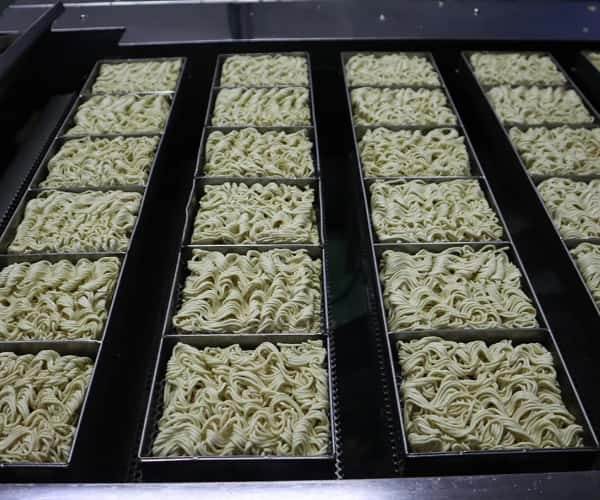
2. Planning Your Instant Noodle Production Line
2.1 Determining Production Capacity
Production lines are typically categorized as:
- Мелкий: 1,000–10,000 packs/day, suitable for startups.
- Средний масштаб: 10,000–100,000 packs/day, good for regional distribution.
- Крупномасштабный: 100,000+ упаковки/день, targeting nationwide or export markets.
2.2 Choosing Automation Level
- Полуавтоматические линии: Require more labor but cost less to install.
- Полностью автоматические линии: Высокий выход, lower labor cost, but higher initial investment.
2.3 Space and Infrastructure Requirements
- Small plant: 500–800 m².
- Medium plant: 1,000–1,500 м².
- Large plant: 2,000+ м².
- Must include space for raw material storage, production line, упаковка, quality control lab, and finished goods warehouse.
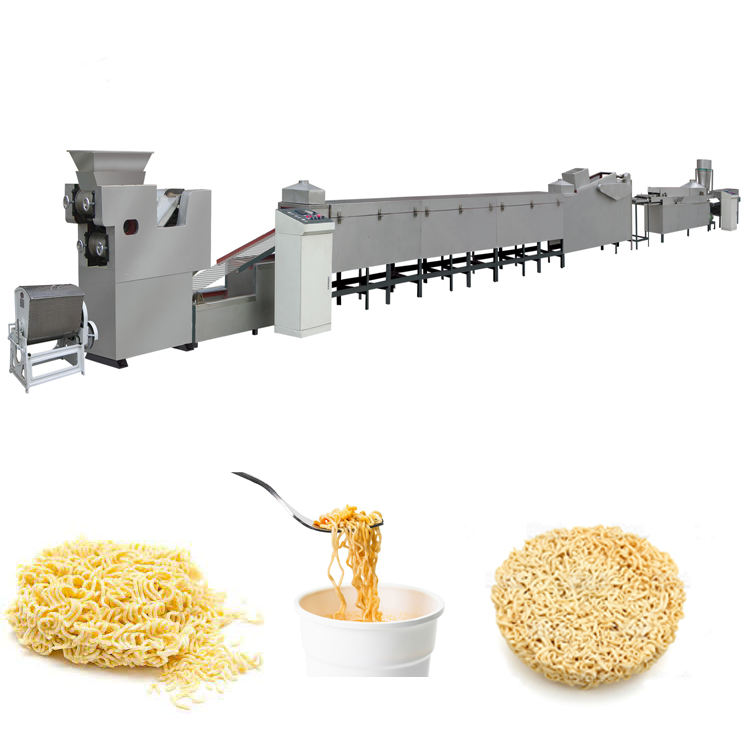
3. Step-by-Step Process of Instant Noodle Production
Полный Мгновенная линия производства лапши follows these steps:
3.1 Мука смешивание
- Ингредиенты: Пшеничная мука, вода, соль, щелочная вода (Кансуй), и добавки.
- Машина: Automatic flour mixer ensures uniform hydration.
3.2 Dough Sheeting
- Dough is compressed into sheets by a compound roller.
- Multiple rolling stages improve gluten structure and elasticity.
3.3 Cutting and Slitting
- Sheets are cut into thin strands using a slitter cutter.
- Noodles may be straight or wavy depending on cutter design.
3.4 Паряки
- Strands are steamed in a tunnel at 100–105°C.
- Gelatinization ensures proper texture after cooking.
3.5 Shaping and Cutting
- Noodles are folded and placed into molds or cups.
3.6 Frying or Drying
- Жареная лапша: Dehydrated in edible oil at ~150°C for 1–2 minutes.
- Не жареная лапша: Passed through a hot-air dryer at 70–90°C.
3.7 Охлаждение
- Essential for stabilizing product before packaging.
3.8 Упаковка
- Bag noodles: Машина для упаковки подушек.
- Чашка лапши: Cup sealing machine with seasoning sachet insertion…
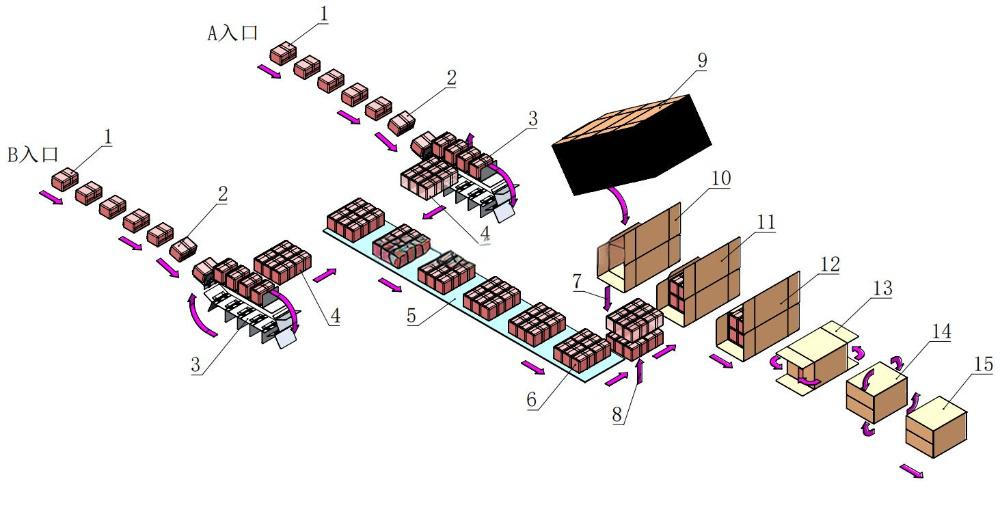
4. Machinery and Technical Specifications
| Машина | Функция | Емкость | Власть | Размеры | Примечания |
|---|---|---|---|---|---|
| Flour Mixer | Mix flour & вода | 200–500 кг/ч | 4–7 kW | 1500×900×1200 mm | Нержавеющая сталь |
| Составной валик | Roll dough into sheets | 200–800 кг/ч | 5–10 кВт | 2000×1000×1500 mm | Регулируемая толщина |
| Slitter Cutter | Cut sheets into strands | 200–500 кг/ч | 2–5 kW | 1200×800×1100 mm | Customizable width |
| Набор туннеля | Steam strands | 200–1000 кг/ч | 20–30 kW | 6000×1200×2200 mm | Контроль температуры |
| Фритюрница | Fry noodles in oil | 200–1000 pcs/min | 25–45 kW | 7000×1600×2300 mm | Oil circulation |
| Dryer (не жареный) | Dry noodles | 200–800 кг/ч | 30–50 кВт | 9000×1800×2500 mm | Hot-air drying |
| Упаковочная машина | Pack noodles | 30–120 упаковок/мин | 3–6 kW | 3500×900×1400 мм | Bag/cup options |
5. Utility Requirements
- Электричество: Industrial 3-phase supply for high-power machines.
- Steam Boiler: Required for steaming and frying.
- Water Supply: Clean, filtered water for dough and cleaning.
- Ventilation & Exhaust: To remove oil fumes from frying section.
- Wastewater treatment: Required by food safety regulations.

6. Quality Control in Production
6.1 Сырье
- Wheat flour must meet protein content standards.
- Palm oil should be food-grade and filtered regularly.
6.2 In-Process Control
- Dough moisture checked every batch.
- Steaming tunnel temperature continuously monitored.
6.3 Finished Product Tests
- Содержание влаги: Ниже 10%.
- Содержание масла (Жареная лапша): 18–24%.
- Cooking time: 3–5 minutes.
- Срок годности: 6–12 месяцев.
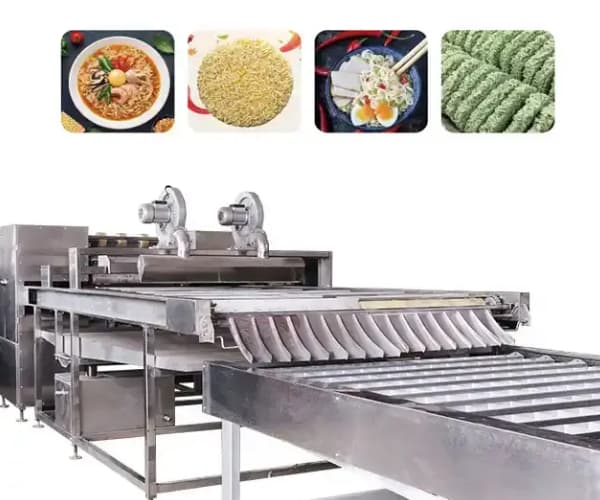
7. Cost Analysis for Instant Noodle Production Line
7.1 Первоначальные инвестиции
- Small-scale semi-automatic line: $100,000- 200 000 долларов.
- Medium-scale automatic line: $300,000–$600,000.
- Large-scale fully automatic line: $800,000–$1,500,000.
7.2 Эксплуатационные расходы
- Сырье: Мука, масло, flavorings (50–60% of cost).
- Труд: Operators, инженеры, QC staff.
- Energy: Электричество + steam fuel (gas or coal).
- Обслуживание: Spare parts and cleaning.
7.3 Profitability Example
- Cost per pack: $0.10–$0.15.
- Цена продажи: $0.25–$0.40 (depending on market).
- Gross margin: 50–60%.
8. Factory Layout Design
Типичный планировка завода follows this sequence:
- Raw Material Storage Area – flour silos, oil tanks, seasoning storage.
- Смешивание & Dough Room – flour mixing and dough sheet rolling.
- Паряки & Frying Area – requires steam boiler connection and exhaust system.
- Охлаждение & Packaging Area – separated from hot processing areas.
- Quality Control Lab – small room for testing samples.
- Finished Product Warehouse – dry, ventilated, pest-free environment.
Flow should be linear, avoiding cross-contamination between raw and finished goods.
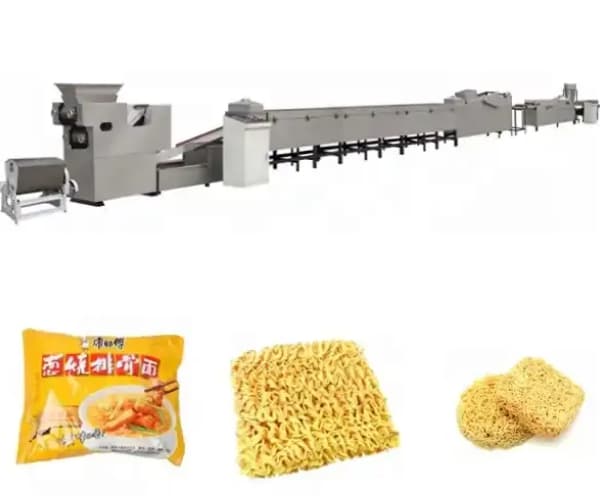
9. Regulatory and Safety Considerations
- Food Safety Standards: HACCP, Iso 22000, FDA (for export).
- Worker Safety: Heat protection in frying section, slip-proof flooring.
- Пожарная безопасность: Oil fryers must include fire suppression systems.
- Environmental Compliance: Proper oil filtration and wastewater treatment.
10. Tips for Success in the Instant Noodle Business
- Choose the right product type based on market demand.
- Invest in flavor R&Д – consumers often choose noodles for taste.
- Partner with reliable machinery suppliers offering after-sales service.
- Start with scalable capacity and expand as sales grow.
- Focus on packaging design to stand out on store shelves.
Choose us as your Instant noodle production line manufacturer
Building an instant noodle production line requires significant investment but offers strong profitability in a global growth market. By carefully selecting the right equipment, designing an efficient production flow, and implementing strict quality control, manufacturers can produce noodles that meet both consumer demand and international food safety standards.
With the right strategy, an instant noodle factory can evolve from a regional supplier to an international brand.
